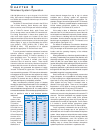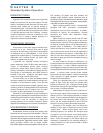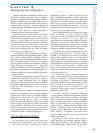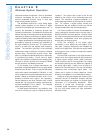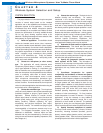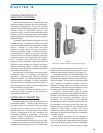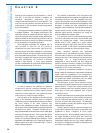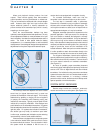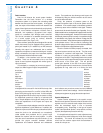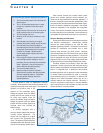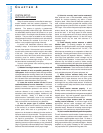
SYSTEM SELECTION
The proper selection of a wireless microphone system
consists of several steps based on the intended
application and on the capabilities and limitations of the
equipment required for that application. It should be
remembered that while wireless microphone systems
cannot ultimately be as consistent and reliable as wired
systems, the performance of currently available wireless
can be very good, allowing excellent results to be
obtained. Following these steps will insure selection of the
best system(s) for a given application.
1) Define the application. This definition should
include the intended sound source (voice, instrument,
etc.) and the intended sound destination (sound system,
recording or broadcast). It must also include a description
of the physical setting (architectural and acoustic features).
Any special requirements or limitations should also be
noted: cosmetics, range, maintenance, other possible
sources of RF interference, etc. Finally, the desired
performance level must be defined: radio quality, audio
quality, and overall reliability.
2) Choose the microphone (or other source)
type.
The application will usually determine which
microphone physical design is required: a lavaliere or
clip-on type attached to clothing, or a head-worn type,
both for hands-free use; a handheld type for a vocalist or
when the microphone must be passed around to different
users; a connecting cable when an electric musical
instrument or other non-microphone source is used.
Other microphone characteristics (transducer type,
frequency response, and directionality) are dictated by
acoustic concerns. As mentioned earlier, the microphone
choice for a wireless application should be made using the
same criteria as for a wired application.
3) Choose the transmitter type. The microphone
choice will usually determine the required transmitter type
(handheld, bodypack or plug-on), again based on the
application. General features to consider include:
antenna style (internal or external), control functions and
location (power, muting, gain, tuning), indicators (power,
battery condition), batteries (operating life, type,
accessibility), and physical description (size, shape,
weight, finish, material). For handheld and plug-on types
interchangeability of microphone elements may be an
option. For bodypack transmitters, inputs may be
hardwired or detachable. Multi-use inputs are often
desirable and may be characterized by connector type,
wiring scheme and electrical capability (impedance, level,
bias voltage, etc.).
4) Choose the receiver type. The basic choice is
between diversity and non-diversity. For reasons
mentioned in the receiver section above, diversity
receivers are recommended for all but the most budget-
conscious applications. Though non-diversity types will
work well in many situations, the insurance provided by
the diversity receiver against multipath problems is usual-
ly well worth the somewhat higher cost. Other receiver
features that should be considered are: controls (power,
output level, squelch, tuning), indicators (power, RF level,
audio level, frequency), antennas (type, connectors),
electrical outputs (connectors, impedance, line/
microphone/headphone level, balanced/unbalanced). In
some applications battery power may be required.
5) Determine the total number of systems to be
used simultaneously.
This should take into account
future additions to the system: choosing a system type
that can only accommodate a few frequencies may prove
to be an eventual limitation. Of course, the total number
should include any existing wireless microphone systems
with which the new equipment must work.
6) Specify the geographic location in which
these systems will be used.
This information is
necessary in the next step to avoid possible conflict with
broadcast television frequencies. In the case of touring
applications, this may include cities inside and outside
of the US.
7) Coordinate frequencies for system
compatibility and avoidance of known non-system
sources.
Consult the manufacturer or a knowledgeable
professional about frequency selection and integration of
the planned number of systems. This should be done even
for single systems and must certainly be done for any
multiple system installation to avoid potential interference
problems. Frequency coordination includes the choice of
operating band (VHF and/or UHF) and choice of the
individual operating frequencies (for compatibility and
avoidance of other transmissions). For fixed locations
choose frequencies in unused TV channels. For touring
applications, it may be necessary to carry additional
systems on alternate frequencies, though this is only
practical for a small number of channels. The preferred
approach for touring is to use frequency-agile (tuneable)
units to insure the required number of systems at all venues.
8) Specify accessory equipment as needed.
This may include remote antennas (1/2 wave, 5/8 wave,
directional), mounting hardware (brackets, ground-
planes), antenna splitters (passive, active), and antenna
cables (portable, fixed). These choices are dependent on
operating frequencies and the individual application.
Selection
and Operation
of Wireless Microphone Systems
36
C HAPTER 4
Wireless System Selection and Setup
Part Two: Wireless Microphone Systems: How To Make Them Work




